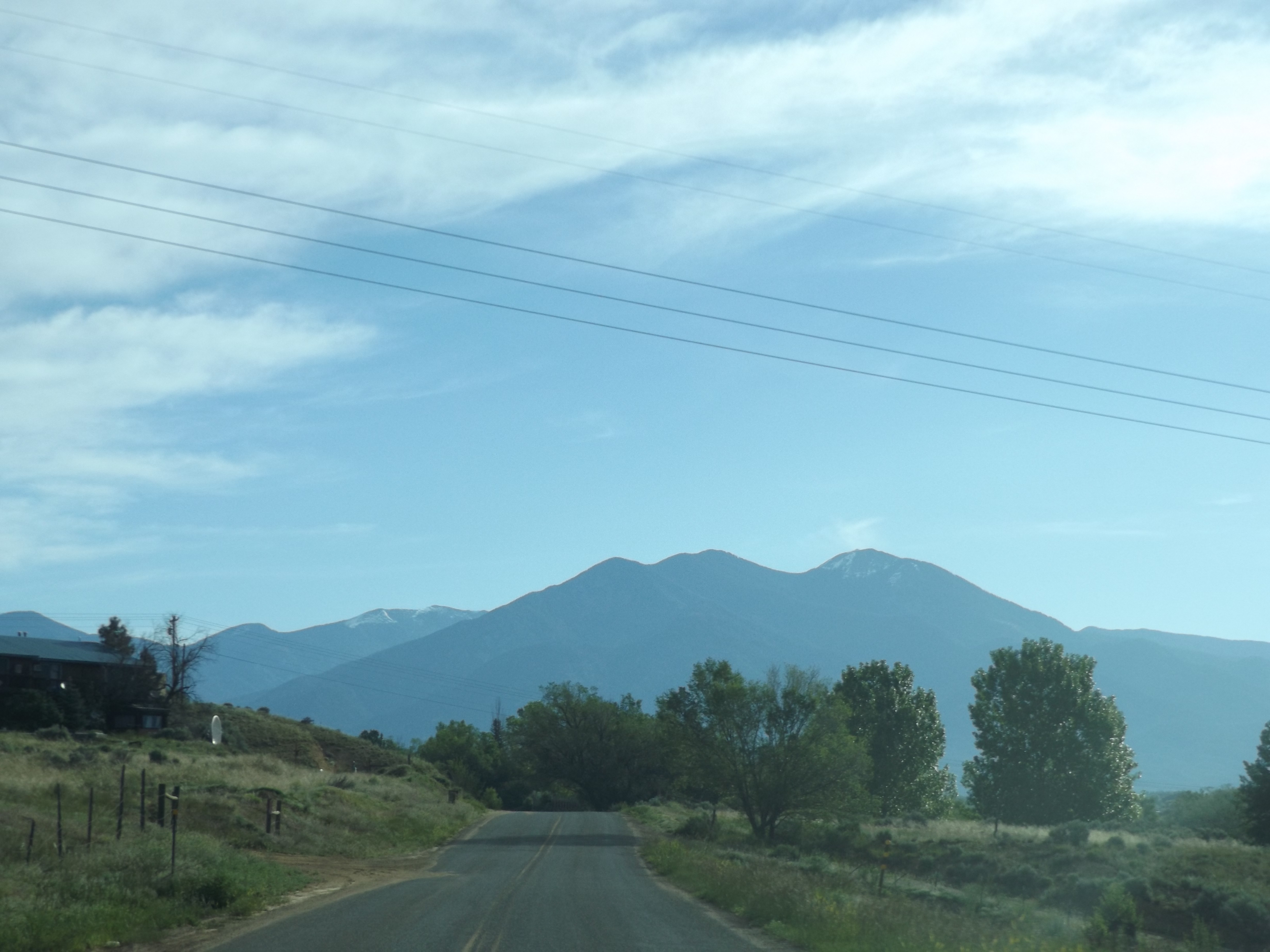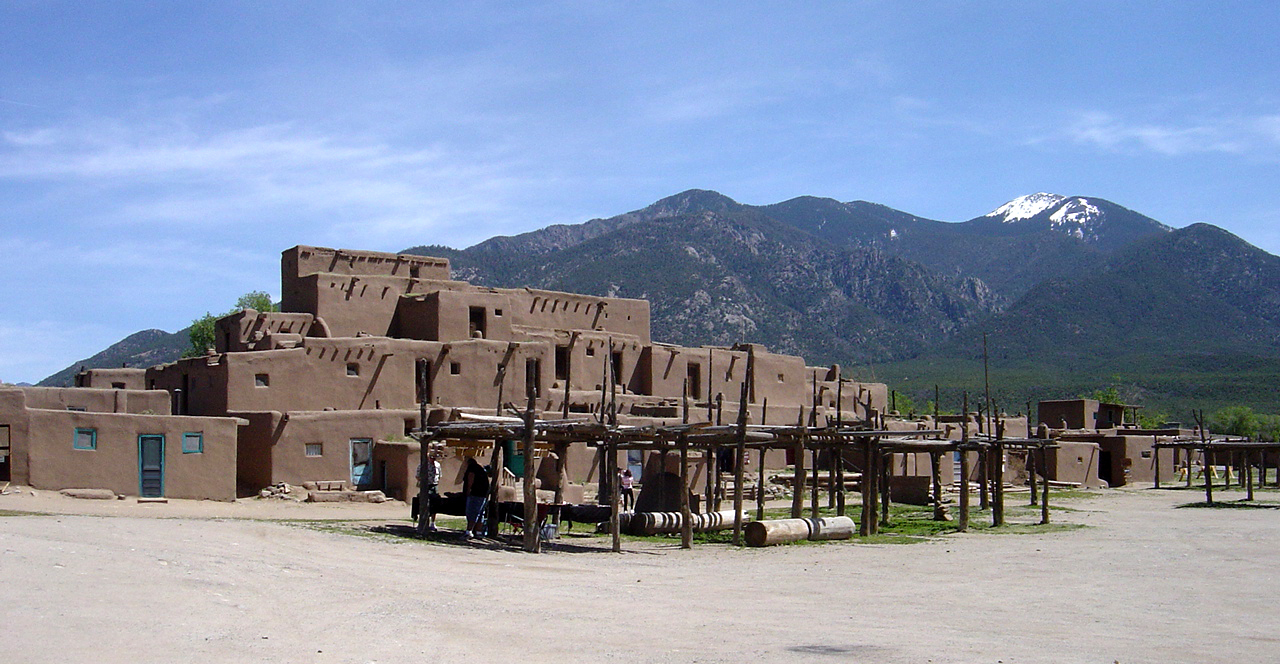|
La Loma Plaza Historic District
The La Loma Plaza Historic District is a historic neighborhood in Taos, New Mexico that was listed as a National Register of Historic Places in 1982. History Taos was originally settled in part due to Don Fernando de Taos land grants, which resulted in the construction of the fortified La Loma Plaza, located on a hill west of the central Taos plaza.La Lomo Plaza Historic District Nomination Form. National Register of Historic Places. September 15, 1981. p. 2. Retrieved July 24, 2014. To protect themselves from attacks by Plains Indians, such as , and [...More Info...] [...Related Items...] OR: [Wikipedia] [Google] [Baidu] |
New Mexico State Road 240
State Road 240 (NM 240) is a state highway in Taos County, New Mexico, United States, that is a northwestern loop off New Mexico State Road 68 (NM 68) from Ranchos De Taos to Taos. Route description NM 240 begins at a signal–controlled intersection with NM 68 (Pasao Del Pueblo Sur) in the western part of the census-designated place of Ranchos De Taos, immediately north of the Ranchos De Taos Post Office. (NM 68 heads north into Taos to connect with the northern terminus NM 240 before ending at U.S. Route 64 S 64 NM 68 heads southerly toward Llano Quemado, Velarde, Española, and Santa Fe. From the intersection at the southern terminus of NM 240, San Francisco Road heads briefly southeast to end at Espinoza Road.) From its southern terminus, NM 240 heads north–northwesterly as a two–lane road, running a bit northeast of and roughly parallel with the Rio Grande del Rancho. After connecting with th ... [...More Info...] [...Related Items...] OR: [Wikipedia] [Google] [Baidu] |
Taos, New Mexico
Taos is a town in Taos County in the north-central region of New Mexico in the Sangre de Cristo Mountains. Initially founded in 1615, it was intermittently occupied until its formal establishment in 1795 by Nuevo México Governor Fernando Chacón to act as fortified plaza and trading outpost for the neighboring Native American Taos Pueblo (the town's namesake) and Hispano communities, including Ranchos de Taos, Cañon, Taos Canyon, Ranchitos, El Prado, and Arroyo Seco. The town was incorporated in 1934. As of the 2010 census, its population was 5,716. Taos is the county seat of Taos County. The English name ''Taos'' derives from the native Taos language meaning "(place of) red willows". Taos is the principal town of the Taos, NM, Micropolitan Statistical Area, which includes all of Taos County. History Taos Pueblo The Taos Pueblo, which borders the north boundary of the town of Taos, has been occupied for nearly a millennium. It is estimated that the pueblo was built ... [...More Info...] [...Related Items...] OR: [Wikipedia] [Google] [Baidu] |
Colonial Architecture
Colonial architecture is an architectural style from a mother country that has been incorporated into the buildings of settlements or colonies in distant locations. Colonists frequently built settlements that synthesized the architecture of their countries of origin with the design characteristics of their new lands, creating hybrid designs. Below are links to specific articles about colonial architecture, specifically the modern colonies: Spanish colonial architecture Spanish Colonial architecture is still found in the former colonies of the Spanish Empire in the Americas and in the Philippines. In Mexico, it is found in the Historic center of Mexico City, Puebla, Zacatecas, Querétaro, Guanajuato, and Morelia. Antigua Guatemala in Guatemala is also known for its well-preserved Spanish colonial style architecture. Other cities known for Spanish colonial heritage are Ciudad Colonial of Santo Domingo, the ports of Cartagena, Colombia, and Old San Juan in Puerto Rico. ;North Ame ... [...More Info...] [...Related Items...] OR: [Wikipedia] [Google] [Baidu] |
Pueblo Architecture
Pueblo architecture refers to the traditional architecture of the Pueblo people in what is now the Southwestern United States, especially New Mexico. Many of the same building techniques were later adapted by the Hispanos of New Mexico into the Territorial Style. Pueblo and Hispano architecture was also the basis for the Pueblo Revival architecture and Territorial Revival architecture, 20th-century Southwestern regional styles that remain popular. History Ancestral Puebloan people first began building pueblo structures during the Pueblo I Period (750–900 CE). When Spanish colonists arrived in the Southwest beginning in the late 1500s, they learned the local construction techniques from the Pueblo people and adapted them to fit their own building types, such as haciendas and mission churches. The Pueblo people also adopted some of the Spanish innovations, including the manufacturing of sun-baked adobe bricks. As modern building materials like brick, glass, and milled lumber be ... [...More Info...] [...Related Items...] OR: [Wikipedia] [Google] [Baidu] |
National Register Of Historic Places
The National Register of Historic Places (NRHP) is the United States federal government's official list of districts, sites, buildings, structures and objects deemed worthy of preservation for their historical significance or "great artistic value". A property listed in the National Register, or located within a National Register Historic District, may qualify for tax incentives derived from the total value of expenses incurred in preserving the property. The passage of the National Historic Preservation Act (NHPA) in 1966 established the National Register and the process for adding properties to it. Of the more than one and a half million properties on the National Register, 95,000 are listed individually. The remainder are contributing resources within historic districts. For most of its history, the National Register has been administered by the National Park Service (NPS), an agency within the U.S. Department of the Interior. Its goals are to help property owners and inte ... [...More Info...] [...Related Items...] OR: [Wikipedia] [Google] [Baidu] |
Comanche
The Comanche or Nʉmʉnʉʉ ( com, Nʉmʉnʉʉ, "the people") are a Native American tribe from the Southern Plains of the present-day United States. Comanche people today belong to the federally recognized Comanche Nation, headquartered in Lawton, Oklahoma. The Comanche language is a Numic language of the Uto-Aztecan family. Originally, it was a Shoshoni dialect, but diverged and became a separate language. The Comanche were once part of the Shoshone people of the Great Basin. In the 18th and 19th centuries, Comanche lived in most of present-day northwestern Texas and adjacent areas in eastern New Mexico, southeastern Colorado, southwestern Kansas, and western Oklahoma. Spanish colonists and later Mexicans called their historical territory ''Comanchería''. During the 18th and 19th centuries, Comanche practiced a nomadic horse culture and hunted, particularly bison. They traded with neighboring Native American peoples, and Spanish, French, and American colonists and set ... [...More Info...] [...Related Items...] OR: [Wikipedia] [Google] [Baidu] |
Apache
The Apache () are a group of culturally related Native American tribes in the Southwestern United States, which include the Chiricahua, Jicarilla, Lipan, Mescalero, Mimbreño, Ndendahe (Bedonkohe or Mogollon and Nednhi or Carrizaleño and Janero), Salinero, Plains (Kataka or Semat or "Kiowa-Apache") and Western Apache ( Aravaipa, Pinaleño, Coyotero, Tonto). Distant cousins of the Apache are the Navajo, with whom they share the Southern Athabaskan languages. There are Apache communities in Oklahoma and Texas, and reservations in Arizona and New Mexico. Apache people have moved throughout the United States and elsewhere, including urban centers. The Apache Nations are politically autonomous, speak several different languages, and have distinct cultures. Historically, the Apache homelands have consisted of high mountains, sheltered and watered valleys, deep canyons, deserts, and the southern Great Plains, including areas in what is now Eastern Arizona, Northern Mexico ... [...More Info...] [...Related Items...] OR: [Wikipedia] [Google] [Baidu] |
Ute People
Ute () are the Indigenous people of the Ute tribe and culture among the Indigenous peoples of the Great Basin. They had lived in sovereignty in the regions of present-day Utah and Colorado in the Southwestern United States for many centuries until European settlers conquered their lands. The state of Utah is named after the Ute tribe. In addition to their ancestral lands within Colorado and Utah, their historic hunting grounds extended into current-day Wyoming, Oklahoma, Arizona, and New Mexico. The tribe also had sacred grounds outside their home domain that were visited seasonally. There were 12 historic bands of Utes. Although they generally operated in family groups for hunting and gathering, the communities came together for ceremonies and trading. Many Ute bands were culturally influenced by neighboring Native American tribes and Puebloans, whom they traded with regularly. After contact with early European colonists, such as the Spanish, the Ute formed trading relatio ... [...More Info...] [...Related Items...] OR: [Wikipedia] [Google] [Baidu] |
National Register Of Historic Places Listings In Taos County, New Mexico
This is a list of the National Register of Historic Places listings in Taos County, New Mexico. This is intended to be a complete list of the properties and districts on the National Register of Historic Places in Taos County, New Mexico, United States. Latitude and longitude coordinates are provided for many National Register properties and districts; these locations may be seen together in a map. There are 43 properties and districts listed on the National Register in the county, including seven National Historic Landmarks. All but seven of the National Register listings within the county are also recorded on the New Mexico State Register of Cultural Properties. Current listings See also * List of National Historic Landmarks in New Mexico * National Register of Historic Places listings in New Mexico References {{Taos County, New Mexico Taos Taos or TAOS may refer to: Places * Taos, Missouri, a city in Cole County, M ... [...More Info...] [...Related Items...] OR: [Wikipedia] [Google] [Baidu] |
Buildings And Structures In Taos, New Mexico
A building, or edifice, is an enclosed structure with a roof and walls standing more or less permanently in one place, such as a house or factory (although there's also portable buildings). Buildings come in a variety of sizes, shapes, and functions, and have been adapted throughout history for a wide number of factors, from building materials available, to weather conditions, land prices, ground conditions, specific uses, prestige, and aesthetic reasons. To better understand the term ''building'' compare the list of nonbuilding structures. Buildings serve several societal needs – primarily as shelter from weather, security, living space, privacy, to store belongings, and to comfortably live and work. A building as a shelter represents a physical division of the human habitat (a place of comfort and safety) and the ''outside'' (a place that at times may be harsh and harmful). Ever since the first cave paintings, buildings have also become objects or canvasses of much artis ... [...More Info...] [...Related Items...] OR: [Wikipedia] [Google] [Baidu] |
Geography Of Taos County, New Mexico
Geography (from Greek: , ''geographia''. Combination of Greek words ‘Geo’ (The Earth) and ‘Graphien’ (to describe), literally "earth description") is a field of science devoted to the study of the lands, features, inhabitants, and phenomena of Earth. The first recorded use of the word γεωγραφία was as a title of a book by Greek scholar Eratosthenes (276–194 BC). Geography is an all-encompassing discipline that seeks an understanding of Earth and its human and natural complexities—not merely where objects are, but also how they have changed and come to be. While geography is specific to Earth, many concepts can be applied more broadly to other celestial bodies in the field of planetary science. One such concept, the first law of geography, proposed by Waldo Tobler, is "everything is related to everything else, but near things are more related than distant things." Geography has been called "the world discipline" and "the bridge between the human and ... [...More Info...] [...Related Items...] OR: [Wikipedia] [Google] [Baidu] |





